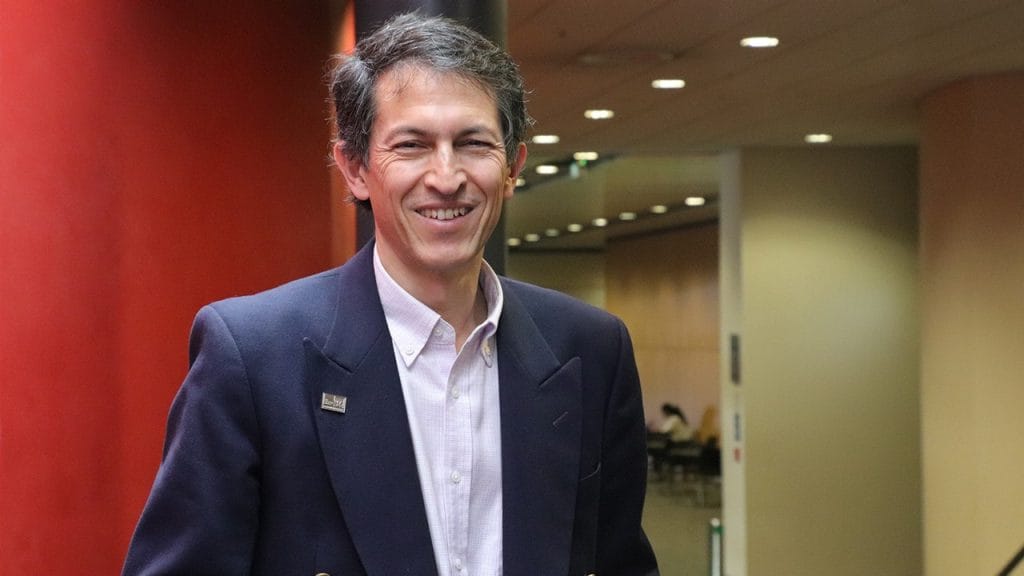Latin America Speeds Forward With 5G Spectrum Auctions as U.S. Stalls
'The global communications industry has aligned on the lower portion of the 3 GHz band' – except the United States.
Fernando Beltran

Spectrum is the invisible infrastructure that powers wireless communication. It is clear now that across the world, national spectrum authorities have embraced innovative allocations to make strategic use of scarce critical spectrum in the lower 3 GigaHertz (GHz) band. “The global communications industry has aligned on the lower portion of the 3 GHz band—3300-3450 MHz—as a core 5G workhorse,” notes CTIA, the Wireless Association.
One exception? The United States.
After leading the world in the last two mobile generations, the U.S. is at a standstill on spectrum auctions and allocation. Congress let the Federal Communications Commission’s auction authority lapse and has failed to identify new bands for commercial allocation.
This is in stark contrast with Latin American countries which have embraced market-based allocation of the 3 GHz band to meet rising consumer demand, freeing the band for 5G applications. Argentina, Brazil, Chile and Colombia have some 300-million subscribers and account for the 75% of the LATAM market, one of the largest and most important in the world.
Auctions have a global history. In 1990, New Zealand repurposed broadcast TV airspace to auction rights for radio, television, and cellular service. In 1993, Australia auctioned two satellite TV service licenses. In 1994, U.S. spectrum auctions took off when the FCC held its first spectrum auction for digital cellular services, raising an incredible and unexpected $20 billion. Over the subsequent 30 years, auctions have delivered successive generations of wireless technological innovation and hundreds of billions of dollars for the U.S. Treasury.
Latin America has studied the success of U.S. spectrum auctions and has applied the learning with successful results. For example, Colombia has been hosting mobile cellular auction since 1994. Colombia’s telecom regulator expects a net investment of $7 billion over the next ten years, thanks in part to auctioning the 3.5 GHz band. The auction allocated four 80-MHz blocks after 9 rounds and raised USD $325 million.
Brazil’s highly praised 5G auction in November 2021 of the 3.5 GHz band raised USD $8.5 billion from four national mobile operators.
Chile’s first mobile cellular auction did not take place until 2021, but it earned USD $450 million for the 3400-3500 and 3600-3650 portions of the 3.5 GHz band for a total of 200 MHz. The 700 MHz and the AWS bands were also auctioned.
Argentina was slow to auction and instead assigned three 100 megahertz blocks on the 3300-3600 MHz band. A modified auction process started in late 2022, and a year later, the country collected $875 million from the three major mobile operators which were awarded 250 megahertz with the reserve price barely surpassing 0.01% by the largest bid.
Meanwhile in Mexico, the telecom regulator authorized 5G in the 3.35-3.45 GHz band without restriction. 5G coexists with U.S. military radar systems just across the border at Fort Bliss in El Paso, Texas. Studies from GSMA, CCS Insight, and DLA Piper identify at least 30 countries where U.S. military operators successfully coexist with commercial 5G in the 3 GHz band, the same physics of that the US Department of Defense claims won’t work in the USA.
The movement and enthusiastic adoption of spectrum auctions in these bands – most notably the lower parts of the 3 GHz band – mirrors what the international community has agreed. Yet the lower 3 GHz band remains a sticking point in US spectrum debates. Progress on allocating the band for commercial wireless use, restoring the FCC’s auction authority, and refilling an empty spectrum pipeline have all stalled thanks to the Pentagon.
The lower 3 GHz band is a prime candidate for commercial use cases like fixed wireless access (FWA), a key competitor to cable broadand. FWA powers advanced technologies like smart manufacturing, precision agriculture, and Internet of Things. With licensed, exclusive use in the lower 3 GHz and related spectrum harmonization, the U.S. could expect $200 billion in economic growth over the next ten years.
Commercial operation in the 3 GHz is ostensibly a goal of the Biden administration’s National Spectrum Strategy and Implementation Plan. However, by doubling-down on retaining the 3 GHz for its own equipment (much of it obsolete) and inventing scare scenarios about 5G, the Pentagon has effectively stopped all progress on commercial spectrum allocation.
The fact remains that 5G coexists with specialized defense operations in the 3 GHz band. This happens every day in America’s next door neighbor Mexico and dozens of other countries. Latin America looks to grow the economy with 5G in the 3 GHz band and a full-throated embrace of spectrum auctions. The U.S. should take note and re-assume its wireless leadership position.
Fernando Beltran is a professor of Information Systems and Operations Management at the University of Auckland Business School. Born in Colombia, he earned a PhD in Applied Mathematics from the State University of New York. This Expert Opinion is exclusive to Broadband Breakfast.
Broadband Breakfast accepts commentary from informed observers of the broadband scene. Please send pieces to commentary@breakfast.media. The views expressed in Expert Opinion pieces do not necessarily reflect the views of Broadband Breakfast and Breakfast Media LLC.










Member discussion